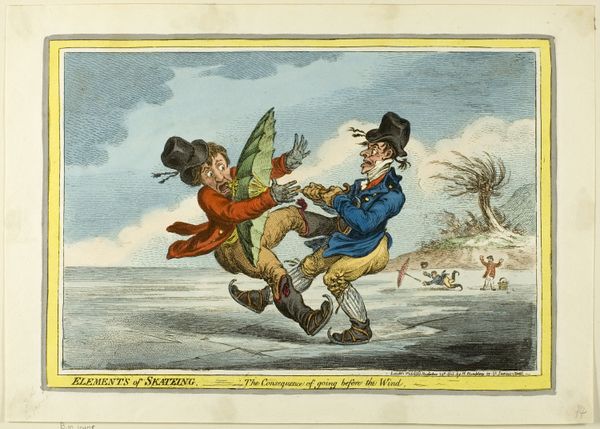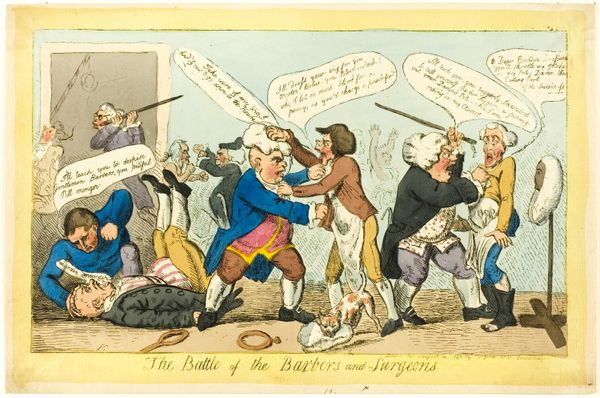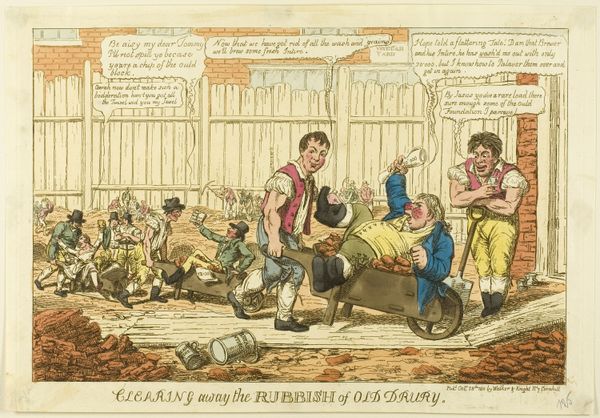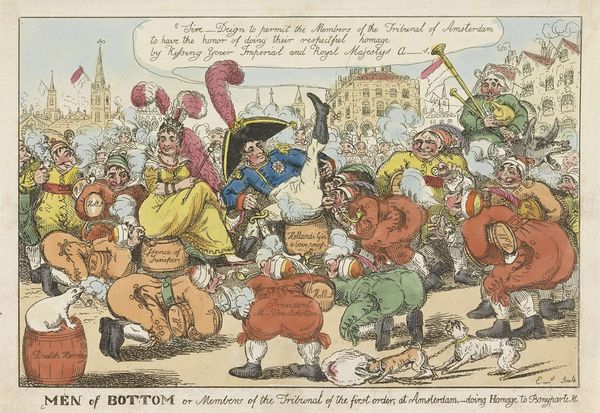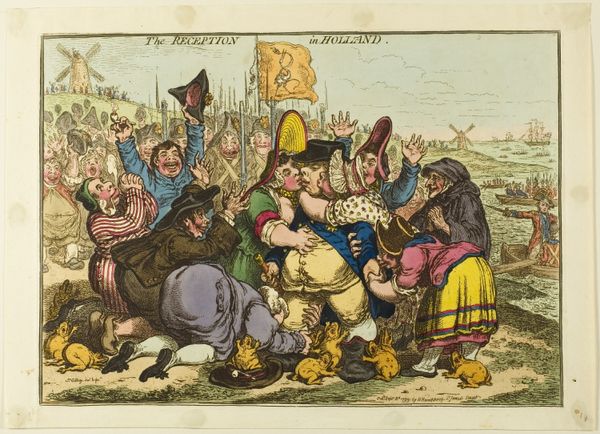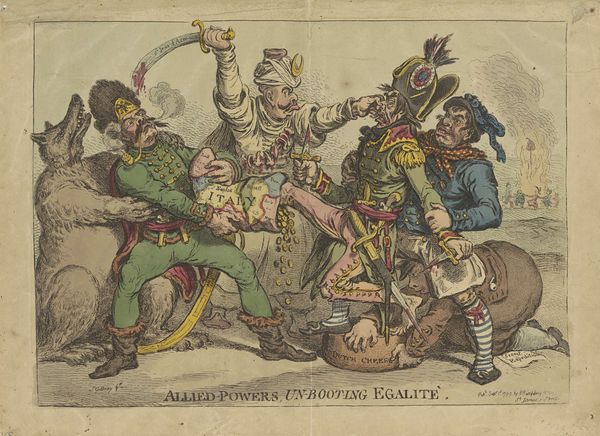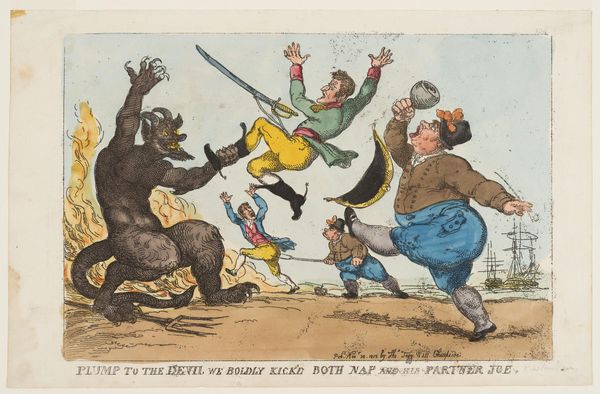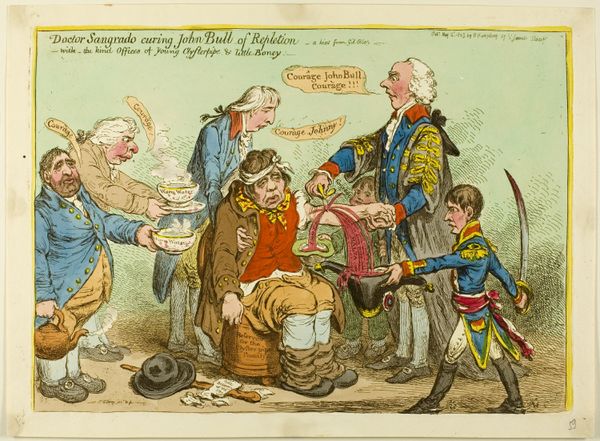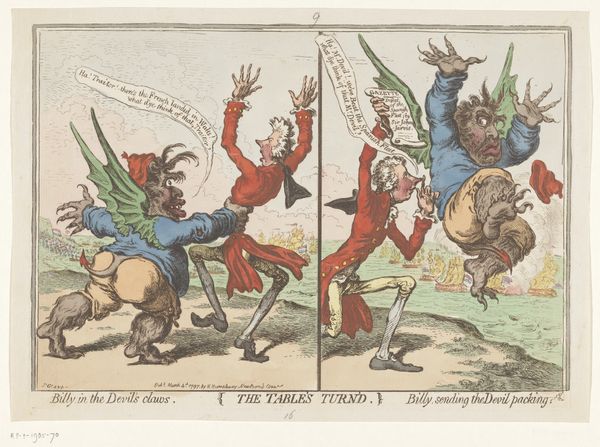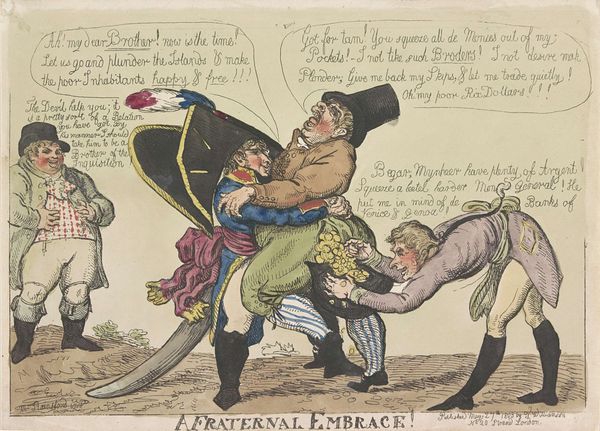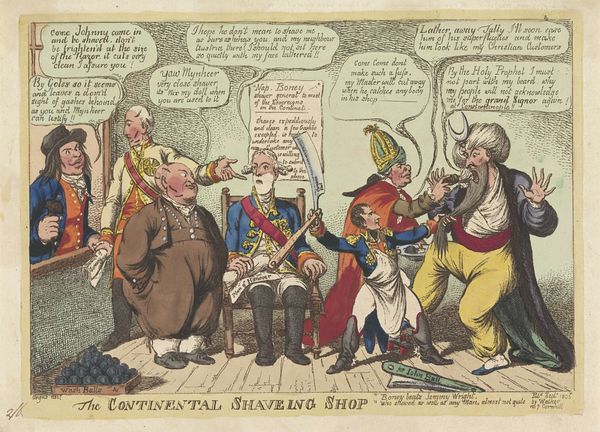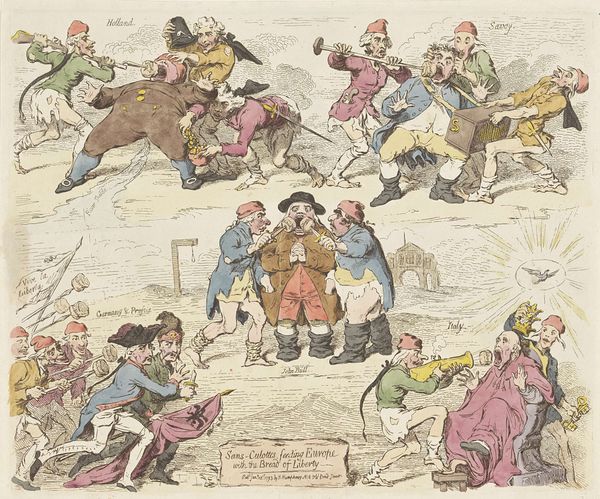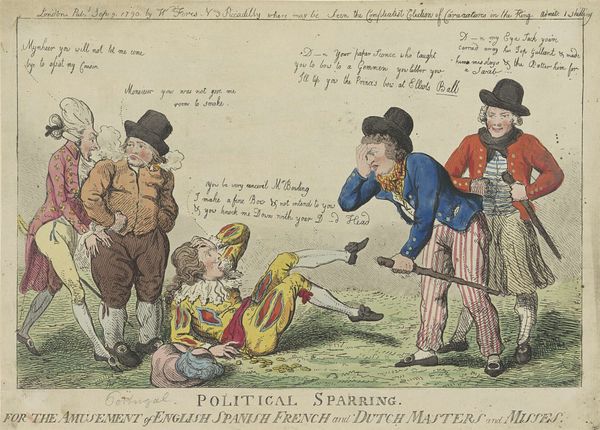
drawing, print, etching, paper
#
drawing
# print
#
etching
#
caricature
#
paper
#
romanticism
#
history-painting
Dimensions: 246 × 338 mm (image); 252 × 349 mm (plate); 288 × 392 mm (sheet)
Copyright: Public Domain
Curator: Ah, here we have James Gillray’s "Blindman's Buff or Too Many for John Bull," possibly from 1795. This piece, rendered with etching and paper, exemplifies the artist's sharp satirical wit during a tumultuous period in European history. Editor: What a scrum! My immediate thought is a muddle of confused figures – John Bull appears cornered, and there’s such kinetic energy conveyed through the etching lines. A visual representation of chaos, wouldn’t you say? Curator: Precisely. Gillray uses the popular game as an allegory. John Bull, representing England, is blindfolded, beset by European powers seeking to exploit its vulnerabilities, particularly during the French Revolutionary Wars. This print critiques political avarice, portraying figures like those symbolizing Austria and Prussia gleefully taking advantage. Editor: Absolutely, look at the figure in green, seemingly Emperor Francis II with his hands raised, in what is now referred to the "OK sign", though here it is seemingly more akin to a child sticking its fingers out at someone. Curator: Yes, his gestures serve multiple symbolic roles, highlighting contemporary anxieties about European alliances and power dynamics. Editor: Notice too the symbolism of the items being brandished like trophies. It highlights the tangible impact of greed on John Bull's resources. How would the public have perceived this work, do you think? Curator: With a knowing nod and perhaps a bitter laugh! Gillray’s prints were widely circulated, influencing public opinion. He tapped into existing anti-establishment sentiment, offering a critical perspective on the handling of international affairs and economic policies. He captured the mood and anxieties of the period brilliantly. Editor: Gillray’s impact resonates through his potent use of visual symbols to expose hypocrisy and illuminate the often-murky world of politics and societal pressures. It speaks to something innate in the human condition, doesn’t it? Curator: Indeed, seeing the world through the artist’s incisive critique can leave a lasting impact, prompting us to examine contemporary political theatre with the same level of skepticism. Editor: Yes, even though the historical figures may have passed from the scene, the patterns and temptations they represent feel enduringly familiar, if you ask me.
Comments
No comments
Be the first to comment and join the conversation on the ultimate creative platform.

